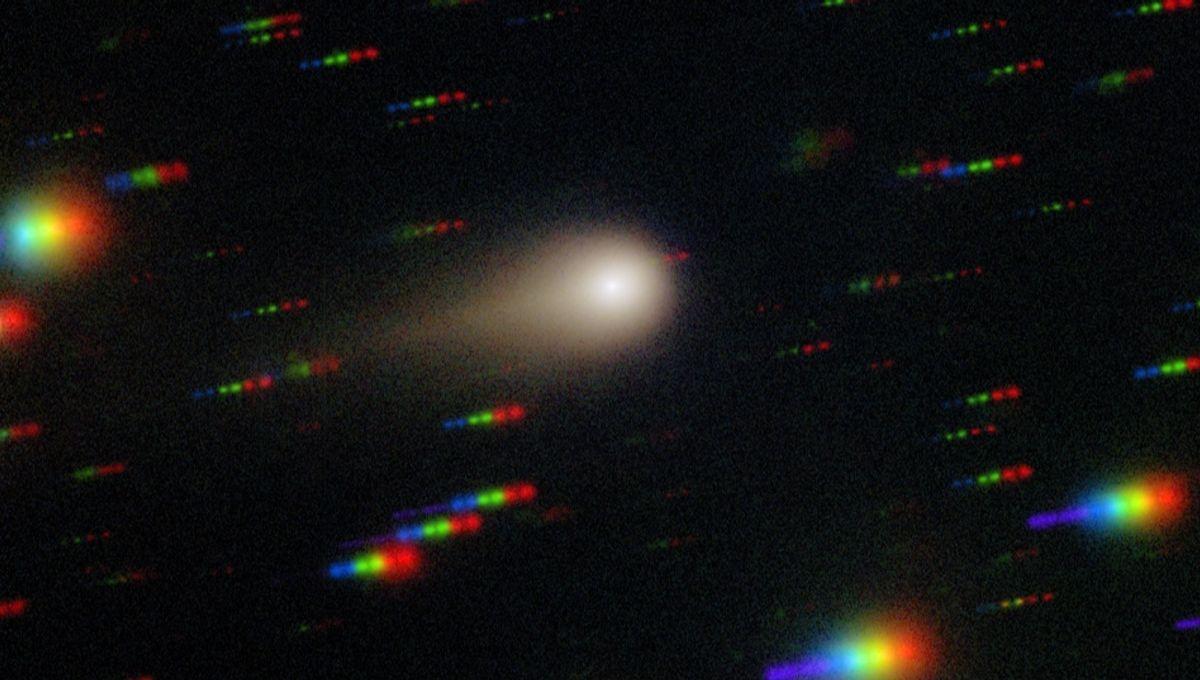Interstellar Comet 3I/ATLAS Is Losing Buckets Of Water Every Second – And It's Got Cyanide

Interstellar Comet 3I/ATLAS Is Losing Buckets Of Water Every Second – And It's Got Cyanide
Comet 3I/ATLAS is the third interstellar visitor and continues to be a treasure trove of information about the condition of its formation. As it speeds through the Solar System, telescopes have been pointed at it, revealing new tidbits about this fascinating space rock.
The rest of this article is behind a paywall. Please sign in or subscribe to access the full content. Just recently, we have learned about the unusual ratio of nickel to iron (both common in comets); comet 3I/ATLAS releases more nickel than Solar System comets and even fellow interstellar object Comet 2I/Borisov. A yet-to-be-peer-reviewed paper also reports that the third interstellar interloper has been seen releasing hydrogen cyanide, and while death by comet could be a great Agatha Christie novel, the presence of this molecule is intriguing but not surprising. It is a common prebiotic molecule found in many gas clouds. Meanwhile, NASA’s Neil Gehrels Swift Observatory has been focusing on studying the comet in ultraviolet, something that can’t be done from the ground. The ozone layer is great for keeping us alive, but not great for ultraviolet astronomy. From monitoring 3I/ATLAS in this way, researchers have now reported the first detection of hydroxyl (OH) gas from this object, a chemical fingerprint of water. The team estimates that the comet releases about 40 kilograms (88 pounds) of water per second. That means an Olympic pool's worth of water is lost every 18 hours. It also suggests that about 8 percent of the surface of the comet is active at any one point. Both aspects are much higher than Solar System comets at a comparable distance away from the Sun. “When we detect water—or even its faint ultraviolet echo, OH—from an interstellar comet, we’re reading a note from another planetary system,” Dennis Bodewits, professor of physics at Auburn University, said in a statement. “It tells us that the ingredients for life’s chemistry are not unique to our own.” Visible light (left) versus ultraviolet (right) view of interstellar comet 3I/ATLAS in July and August. Image credit: Dennis Bodewits, Auburn University This abundance in water emission strengthens the case for Comet 3I/ATLAS to be an older comet, several billion years older than the Solar System. It also strengthens the case for its origin being in the thick disk. Spiral galaxies like our own have their spiral arms in a plane called the thin disk, where the Solar System resides. Comet 2I/Borisov and the first interstellar object 1I/’Oumuamua also came from the thin disk. There is also a region called the thick disk located above and below the plane of the Milky Way, where older stars tend to reside. In a world exclusive published in July, IFLScience spoke to Matthew Hopkins and Professor Chris Lintott about their model suggesting that comet 3I/ATLAS was from the thick disk. “Our model says that older stars tend to produce water-rich interstellar objects. So if we're right, as this thing comes further towards the Sun, we should get a lot of cometary activity,” Professor Lintott told IFLScience at the time. The data continue to be consistent with this view. Comet 3I/ATLAS is currently not visible from Earth, as we are on the other side of the Sun from it. Rovers and orbiters on Mars have snapped photos of it, and soon the Jupiter-bound mission JUICE will also observe it. We are learning so much about this special interloper and there is so much more to find out. “Every interstellar comet so far has been a surprise,” added Zexi Xing, postdoctoral researcher and lead author of the new study. “‘Oumuamua was dry, Borisov was rich in carbon monoxide, and now ATLAS is giving up water at a distance where we didn’t expect it. Each one is rewriting what we thought we knew about how planets and comets form around stars.” The study is published in The Astrophysical Journal Letters.


